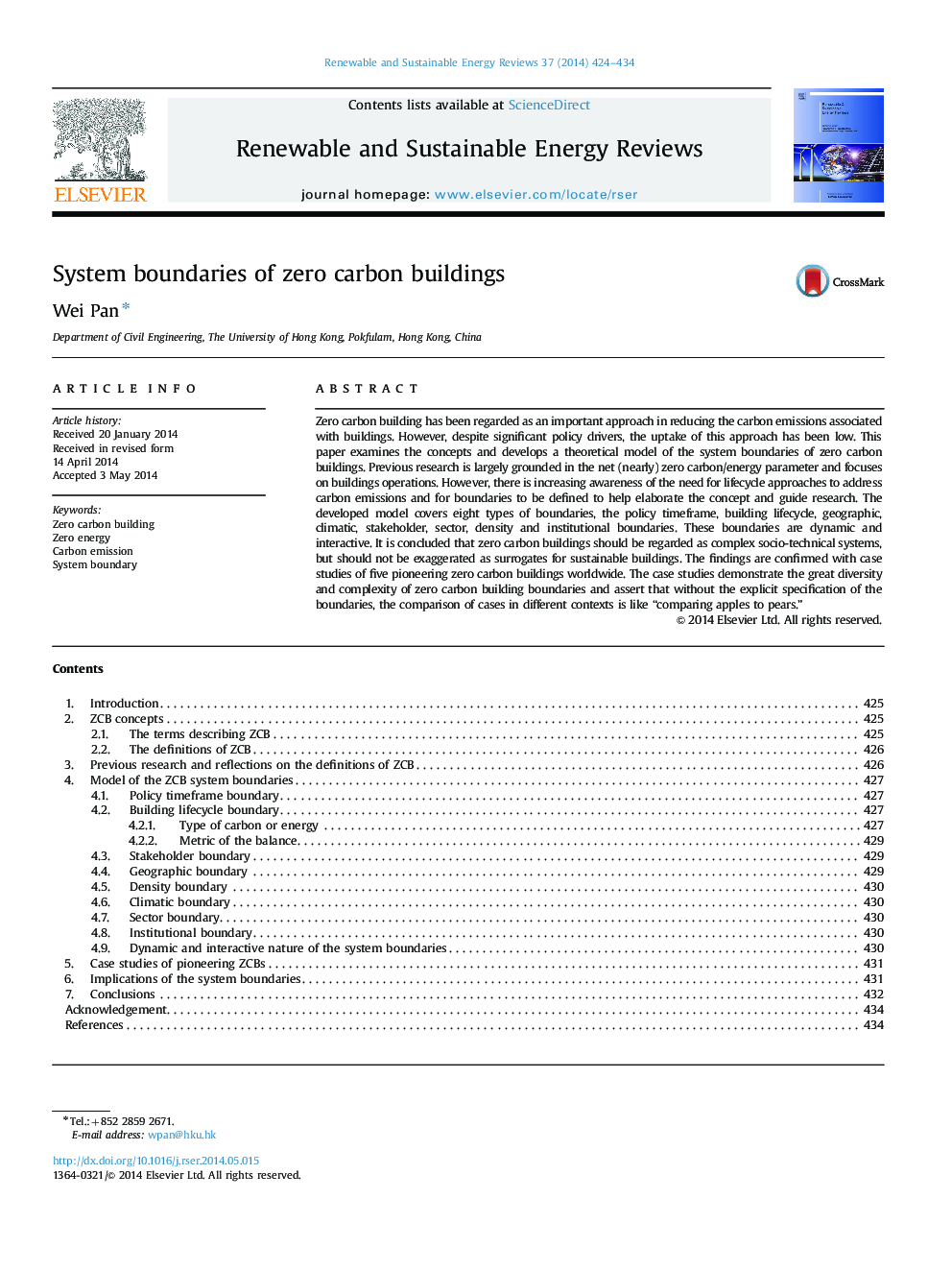| Article ID | Journal | Published Year | Pages | File Type |
|---|---|---|---|---|
| 8119629 | Renewable and Sustainable Energy Reviews | 2014 | 11 Pages |
Abstract
Zero carbon building has been regarded as an important approach in reducing the carbon emissions associated with buildings. However, despite significant policy drivers, the uptake of this approach has been low. This paper examines the concepts and develops a theoretical model of the system boundaries of zero carbon buildings. Previous research is largely grounded in the net (nearly) zero carbon/energy parameter and focuses on buildings operations. However, there is increasing awareness of the need for lifecycle approaches to address carbon emissions and for boundaries to be defined to help elaborate the concept and guide research. The developed model covers eight types of boundaries, the policy timeframe, building lifecycle, geographic, climatic, stakeholder, sector, density and institutional boundaries. These boundaries are dynamic and interactive. It is concluded that zero carbon buildings should be regarded as complex socio-technical systems, but should not be exaggerated as surrogates for sustainable buildings. The findings are confirmed with case studies of five pioneering zero carbon buildings worldwide. The case studies demonstrate the great diversity and complexity of zero carbon building boundaries and assert that without the explicit specification of the boundaries, the comparison of cases in different contexts is like “comparing apples to pears.”
Related Topics
Physical Sciences and Engineering
Energy
Renewable Energy, Sustainability and the Environment
Authors
Wei Pan,
